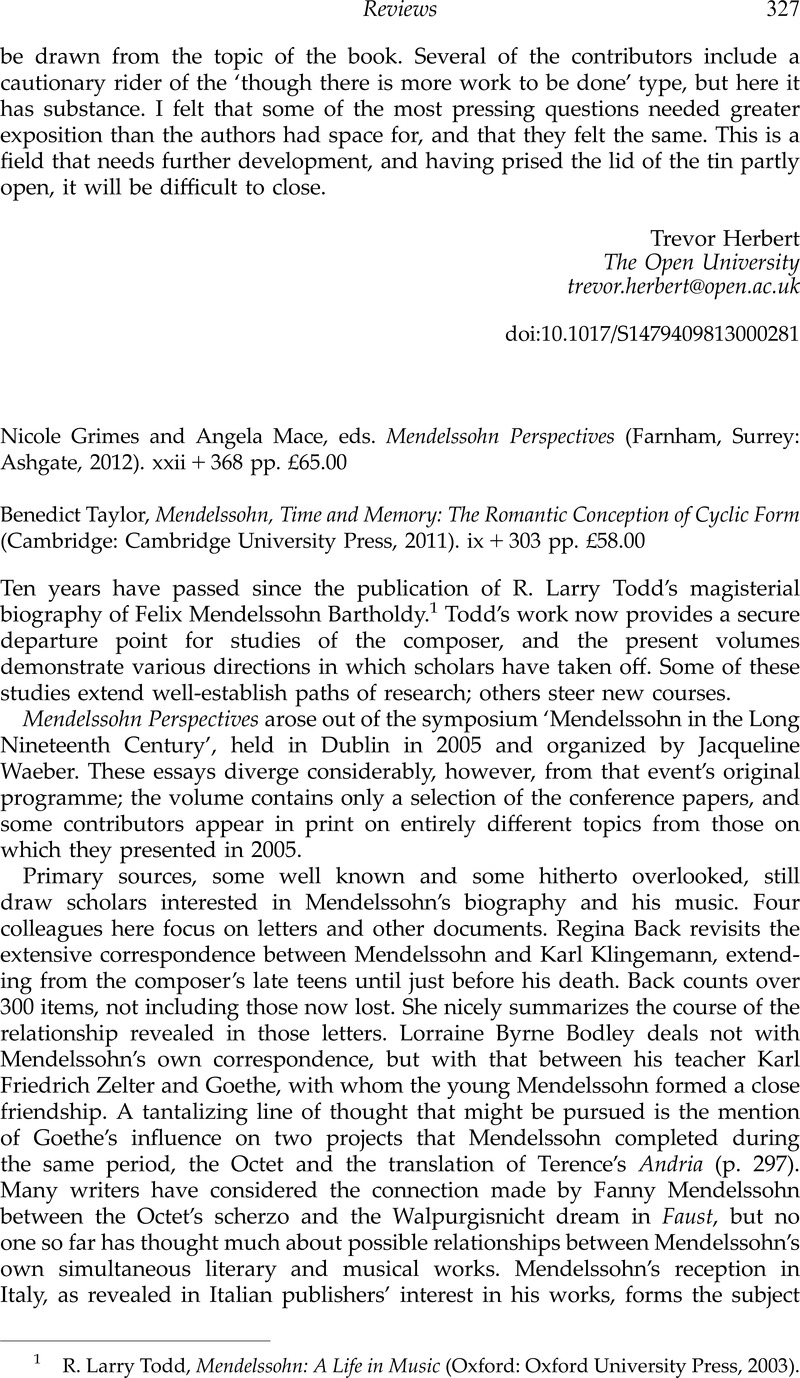No CrossRef data available.
Article contents
Nicole Grimes and Angela Mace, eds. Mendelssohn Perspectives (Farnham, Surrey: Ashgate, 2012). xxii + 368 pp. £65.00 - Benedict Taylor, Mendelssohn, Time and Memory: The Romantic Conception of Cyclic Form (Cambridge: Cambridge University Press, 2011). ix + 303 pp. £58.00
Published online by Cambridge University Press: 06 January 2014
Abstract

- Type
- Book Reviews
- Information
- Copyright
- Copyright © Cambridge University Press 2013
References
1 Todd, R. Larry, Mendelssohn: A Life in Music (Oxford: Oxford University Press, 2003)Google Scholar
2 Hennemann, Monika, ‘Much Ado about The Tempest: London Opera Politics, Intercultural Incomprehension, and Felix Mendelssohn’, Journal of Musicological Research 29/2–3 (2010): 86–118Google Scholar
3 Oddly, Grimes produces one mistranslation of Hanslick that sounds, ironically, like the anti-Semitic Wagner. Hanslick wrote, ‘Zu Anfang heißt uns Mendelssohn den Gott der Juden anflehen um Segen für das Haus Israel und das Haus Aaron.’ Grimes translates thus: ‘To begin with we called on Mendelssohn, the God of the Jews, to implore a blessing on the house of Israel and the house of Aaron’ (p. 60). Correctly, this would read, ‘…Mendelssohn bids us to implore the God of the Jews for a blessing ….’
4 Hepokoski, James and Darcy, Warren, Elements of Sonata Theory: Norms, Types, and Deformations in the Late-Eighteenth-Century Sonata (Oxford: Oxford University Press, 2006)CrossRefGoogle Scholar


